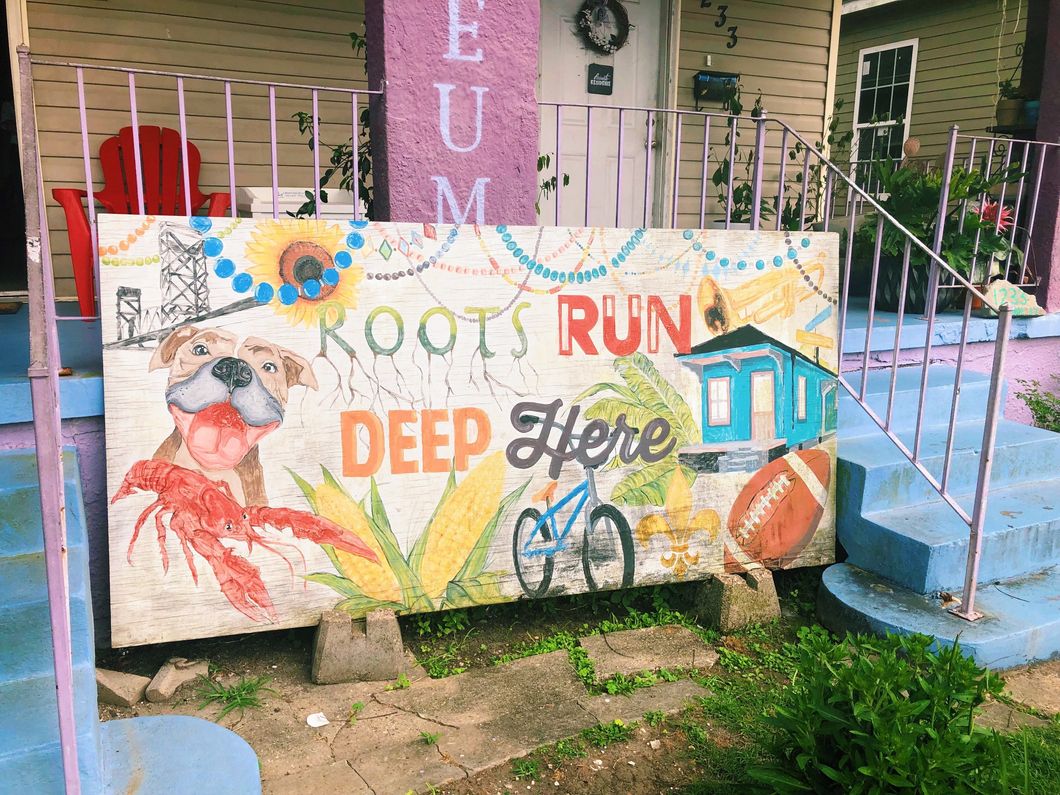This past week, I had the amazing opportunity to go down to New Orleans with a wonderful group of students from my college. This city is undeniably bursting with life, culture, and fun.
But there is so much more.
My first encounter with the Big Easy was last summer on a similar service-oriented alternative break run through JMU. Before this break, I thought Hurricane Katrina was just a really bad storm, but I was so wrong. Katrina highlighted the mistreatment of the lower-income areas and minorities of New Orleans. Homes were destroyed. Families were forced out with nowhere to go, and still no home to come back to even 14 years later.
When I went to New Orleans for a second time this past week, I learned even more about this not-so-natural disaster. It was so frustrating for me to learn that Katrina was made exponentially worse due to the blatant disregard of the people.
There was a hurricane simulation done months before Katrina struck, named Hurricane Pam. The purpose of this simulation was to warn people about the potential hurricane crisis and its outcomes. The Hurricane Pam simulation predicted that over 60,000 people would be killed with several thousand more becoming injured or ill. Even with these alarmingly high numbers, there was a shocking lack of response.
Another man-made issue that drastically increased the devastating effects of Katrina was the Mississippi River Gulf Outlet, otherwise known as MR-GO. MR-GO was constructed in order to provide a shorter route between the Gulf of Mexico and the Industrial Canal, New Orleans' inner harbor; however, when Katrina hit, MR-GO channeled the storm surge into New Orleans and significantly contributed to the breaching of the levees. The levees were not properly designed, constructed, nor maintained and when they failed, several billion gallons of water flooded into New Orleans.
When I told people that I was going to New Orleans to volunteer, the most frequent response I got was "Oh, did they have another hurricane?"
No. Almost 14 years after Hurricane Katrina, 35,000 abandoned lots still remain where people's homes used to be.
I still have a lot to learn, but that is exactly why I am writing this article: to invite you all to learn with me. It is so incredibly important that we are educated on this topic because a lot of people fail to realize that New Orleans is still recovering. Many people who I have spoken to thought that everything was fixed immediately after Katrina, but that is not the case.
Driving around the Lower Ninth Ward and seeing all the empty lots that are now overgrown with tall grass and trees, it is hard to imagine that someone's home used to be there. A home that was passed down through the generations. A home where memories were made.
And then it hits you. And it is heartbreaking.
So, what now? The first step that everyone can take is doing their research. Learn about New Orleans and Hurricane Katrina so that you can be better oriented and prepared to give what is needed, not what you think is needed. A lot of the rebuilding that has happened since Katrina has gentrified the lower-income areas of New Orleans. So now, the people who once lived there can no longer afford it.
The next step is to get involved. Whether it's sacrificing a Starbucks run or two each month to donate a few bucks to non-profit organizations that help in rebuilding efforts or physically going down to New Orleans to give some hands-on help. Any little thing you can do to help is so impactful even if you don't realize it.
SBP is a wonderful non-profit organization that I had the pleasure of working with this past week. Their mission is to shrink the time between disaster and recovery through five interventions: Rebuilding, Sharing, Preparing, Advising, and Advocating. To learn more about SBP and to get involved, check out their website here.

















